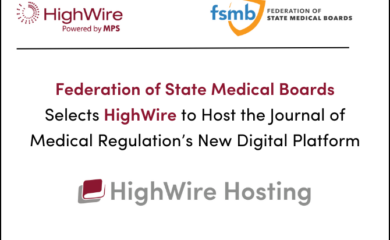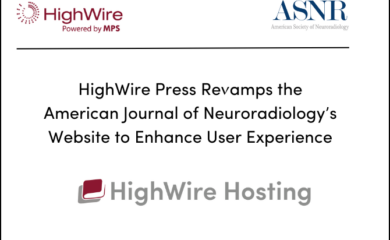As we look back on 2021, we can see that our scholarly publishing community has shown great resilience and innovation despite many challenges during the COVID-19 pandemic years. We have witnessed an influx of new business models intended to create a more equitable and sustainable industry, and have seen publishers making strides toward ensuring that articles include data that is persistent and reproducible, and that all outputs are scientifically-sound.
Let’s have a look at what leaders in our community have to say about trends that will be relevant to the broader scholarly ecosystem in 2022:
OA transformation
Claire Moulton, Publisher, The Company of Biologists:
How much are Transformative Agreements contributing to OA transformation? And which transformative models will emerge as winners in this area? Working parties (under the auspices of ALPSP and cOAlition S) will be reporting on principles, model licenses, data templates, and workflows to support OA agreements between libraries and (primarily) smaller independent publishers – endorsements and take-up by libraries and publishers will be key. It will be interesting to see how many Transformative Journals met their OA growth targets during 2021 (though cOAlition S have announced a year 1 exception for retaining TJ status). cOAlition S is starting to update the community about their Price Transparency Service. Meanwhile, increased transparency around article metrics emerging from publishers should clarify the advantages that OA publishing can provide for authors.
Research promotion
Matt Broadhead, Assistant Publications Manager, European Respiratory Society:
We’re seeing an increasing number of inquiries, including from medcomms agencies, around things that, a few years ago, we’d have thought of as “peripherals,” such as plain-language summaries, graphical abstracts, and video abstracts. They particularly want to integrate these into the article where it is hosted (in our case on HighWire Press). We already provide sharelines with articles, and we’re in discussion with HW about plain-language summaries (we’re enabling them during submission in anticipation of being able to include them). We’ll, no doubt, be looking further at these as we evolve our sites, but there’s also a lot of work to be done behind the scenes with editors and maybe our public-facing sister organisation, around how these things are reviewed, and how they might be used (or misused) once we release them into the world.
Hear more about ERS’ work to promote research in this recent Best Practice Webinar Series event.
Increased US support for ORCID
Shawna Sadler, Engagement Manager, Outreach & Partnerships, ORCID:
In the early days of 2022, the White House released guidance for science agencies to use as they implement the Trump Administration’s National Security Presidential Memorandum 33 (NSPM-33), a document that sets minimum requirements for research security policies across the government. This supplemental document clarifies what information federally funded researchers must disclose to comply with NSPM-33. This could be following the late 2021 conviction of Charles Lieber, in connection with similar ongoing academic espionage prosecutions.
What does this have to do with projecting an increase in ORCID adoption? The Biden-administration guidance promotes the use of “Digital Persistent Identifiers” (DPIs) in research scholarship and publication and encourages creators of DPIs to account for key information desired by the new requirements. ORCID is already aligned to suit the requirements, in addition to being in adoption by institutions and publishers around the world. Today, there are nearly 13 million ORCID iDs in existence, and we expect to see the US percentage of this number to grow as a direct result of these developments.
Continued preprint growth
John Inglis, Co-founder, Executive Director and Publisher, bioRxiv, Cold Spring Harbor Laboratory and medRxiv:
An effective scientific response to the COVID-19 pandemic demanded that new research results be shared rapidly and internationally, openly available, and publicly evaluated. The preprint servers bioRxiv and medRxiv fulfilled these needs before the pandemic began and for the past two years, they have posted unprecedented numbers of manuscripts. medRxiv has had a particular concentration of pandemic-related preprints. These servers are not simply websites on which anyone can post a manuscript. Both have stringent submission requirements and intense public interest in pandemic science required some adjustment to those criteria. Public evaluation is assisted by a dashboard that aggregates many aspects of the conversation around a particular preprint. That may include pandemic-specific commentaries (NCRC and RR-C19) and full and formal peer review of preprints on any topic conducted by a journal (eLife, EMBO Press, Gigascience) or a journal-agnostic peer-reviewing service (Review Commons, PCI).
In 2022, bioRxiv and medRxiv anticipate further growth in volume and readership. Preprint evaluation and assessment will continue to diversify, with new players and models of peer review and new types of author service. And the roster of journals to which preprints can be automatically submitted (currently more than 300) will continue to expand. The practice of sharing research data before peer review is transforming how science is done and the scholarly publishing community will continue to come to grips with the consequences.
Open everything!
Tony Alves, SVP of Product Management, HighWire Press:
Openness goes beyond preprints and published open access articles. Other research outputs are valuable, and technology has allowed publishers, researchers, and vendors to break open the research article so that the component parts can be surfaced, communicated, and examined. Open data allows researchers to validate the research findings; open methods allow researchers to better understand how research was conducted, with the added benefit of being able to utilize those methods in their own research; open peer review allows everyone to see what criticism and advice went into improving the research.
Making these research outputs accessible means opening up the workflow so that the processes can be examined and evaluated. There are initiatives actively opening up workflow and research outputs, such as DocMaps, the STM/NISO collaboration on peer review terminology, The Notify Project and MECA. Each of these initiatives seek to document editorial events that occur as part of the article processing workflow. These initiatives are codifying terminology so that there is a common language around workflow, they are building schemas so that workflow events are machine readable, and they are implementing policies to help standardize processes. Watch this space! 🙂
As the world needs research more today than ever, and calls for collective support towards economic development via research increase, it is interesting to observe these trends taking shape in realtime across 2022.
Drop us a note if you’d like to chat, we would love to hear your thoughts on the trends you are tracking this year.



